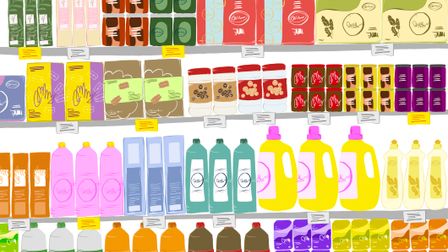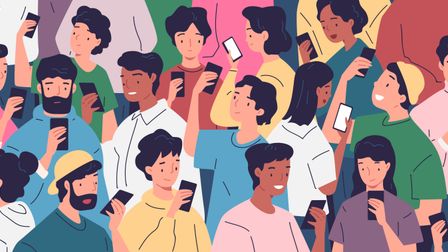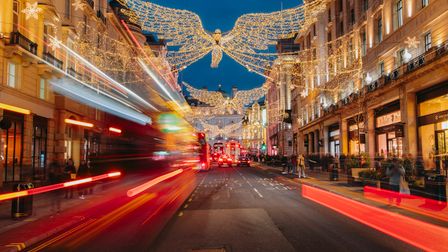From screens to scenes: The rise of experiential storytelling
m ss ng p eces managing partner Kate Oppenheim explores how physical experiences have become the beating heart of brand storytelling.
You could argue that we’re still in the golden age of the television commercial.
Just like the ascension of streaming has ushered in a new era of top-tier, triple-A entertainment, the dominance of social media and streaming has been a boon for the crème de la crème of advertising (alongside the chaos it’s created!). But something new has also emerged. Experiential marketing, once the realm of sampling and wrapped trucks, has surfaced as perhaps the most powerful medium for brand storytelling.
Experiential marketing, once the realm of sampling and wrapped trucks, has surfaced as perhaps the most powerful medium for brand storytelling.
This year, we’ve seen the starkest shift yet into physical spaces that tell brands’ stories. The best experiences that brands are creating for both ephemeral and permanent activations are highly crafted, with brand personality, design, and ethos expressed in every detail.
We’re injecting the same level of creativity and craft into experiential and immersive projects that was previously reserved for the many weeks creative teams, production companies, and post houses would spend together stitching together the smallest details in every frame of a TV spot.
Above: Davante Adams’ house, complete with a Taco Bell, built inside SoFi Stadium by m ss ng p eces for the Rams’ season opener.
The craft looks different, of course. We’re not writing shooting scripts, we’re writing scripts, contingency scripts, and guidebooks for actors and brand ambassadors. We’re not perfecting the colour space on a grade, we’re building a physical lighting environment. We’re building spaces that not only look great on camera, but can spark joy in close-up contact with the public. We’re creating experiences where people can gather together to soak up a story, and hopefully to share that story back out with their own audiences.
This last point is the most crucial: as producers and directors of these events, m ss ng p eces and other immersive creative studios are essentially setting the stage for consumers to do the storytelling for us. In order to do it successfully, our guests (consumers and influencers) have to be given great raw material.
We’re building spaces that not only look great on camera, but can spark joy in close-up contact with the public.
For example, when we built Davante Adams’ house, complete with a Taco Bell, inside SoFi Stadium for the Rams’ season opener, immersive director Brian Moore made sure the drawers in the cabinets were full of Davante’s ephemera, including his favourite sauces, and faux utility and insurance bills for the house. Any visitor opening the drawer would find these treasures, and an irresistible moment to share online.
It probably would have been enough for Apple to drop a faithfully reproduced Severance set in the middle of New York’s Grand Central Station to catch the attention of the show’s rabid fanbase. Inviting the cast onto the set to be surveilled by passers-by, though, made it the year’s most talked-about and envy-inducing experiential marketing stunt. Not only was it instantly shareable, it also spoke directly to the incredible design and performances that are two of the show’s most iconic strengths.
Credits
View on- Producer Ben Stiller
- Producer Dan Erickson
Explore full credits, grab hi-res stills and more on shots Vault

Credits
powered by- Producer Ben Stiller
- Producer Dan Erickson
Above: Apple's faithfully reproduced Severance set, plonked in the middle of New York’s Grand Central Station.
Fashion brands and top-tier sports brands have long known the culture-building power of in-person experiences. Globally, Fashion Week is a non-stop onslaught of high-craft experiential design in the form of shows and elaborately designed and choreographed parties, where influence and brand speak collide. The convening power and goodwill built up in those rooms is then activated through influencer, PR, and retail campaigns throughout the year.
You can see this strategy leveraged to greatest effect in crossover fashion-meets-sports brands like Nike, which crafts massive, global experiences like Air Max Day with wide consumer audiences, influencers, run clubs, and culture press. These brands create entire cultural ecosystems that they leverage to tell the stories they create through experiences.
Fashion brands and top-tier sports brands have long known the culture-building power of in-person experiences.
Earlier this year, we produced a project with John Marshall & Daughters for Chili’s called Fast Food Financing [pictured in header]. A complete immersive theatre experience, it gave people a chance to “apply” for a “loan” so they could afford to buy a meal at the McDonald’s that “happened to be” next door. Directed by m ss ng p eces ECD and Head of Immersive Mike Woods, the activation was an instantly viral exclamation point on the brand’s “value wars” with fast food, showing how a big brand idea can be fully realised in a physical environment.
This wasn’t a dressed-up Chili’s, it was a completely original space where people could live out the brand’s promise, in ways as carefully crafted and executed as any major TV campaign. Every detail, big and small, was designed to maximise the fun and absurdity, imprinting a memorable and bold moment for the brand in consumers’ minds.
Experiential campaigns are not a sideshow to brand marketing today, they’re the beating heart of how a great idea is launched.
Combining creativity, play, craft, accessibility, and influence to shape cultural moments that matter, we invite consumers and influencers alike to step into a brand’s story and become its messengers.
)










